Ask Ethan: Why Does Mars Have A Bright, Red Sky?
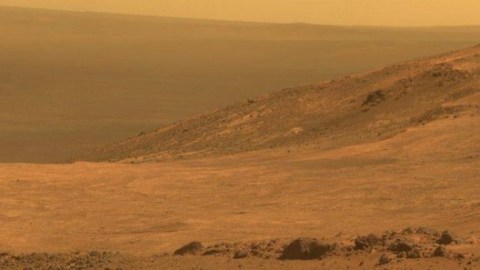
We know that it’s ‘the red planet’ because of the iron in its soil. But why, with such a thin, carbon dioxide atmosphere, is the martian sky so red and bright?
We can learn an awful lot about a world by looking at its atmosphere. On Earth, for example, the optical properties of sunlight passing through our atmosphere tell us about its composition, reflectivity, density, and much more. If our atmosphere were significantly thinner and less dense, the sky would be less blue, sunsets would be less red, and the sky, overall, would be far less bright. When we look at Mars, we find that it has just 0.7% of Earth’s atmospheric density, telling us that even with Mars’ reduced gravity, the mass of its atmosphere is very thin and sparse compared to our world. So why, then, when the Mars rovers and landers have taken pictures, does the Martian sky appear so bright? That’s the question of Vitaly Nasennik, who wants to know:
We, the physicists, know, that the brightness of the sky is caused by the light of the Sun, which is scattered on the matter of the atmosphere. The brightness of the sky directly corresponds to the mass of matter in the atmosphere. […] But what can we see on the pictures from the Curiosity, Spirit & Opportunity rovers? The incredibly bright sky and incredibly blurred mountains! How can you explain it?
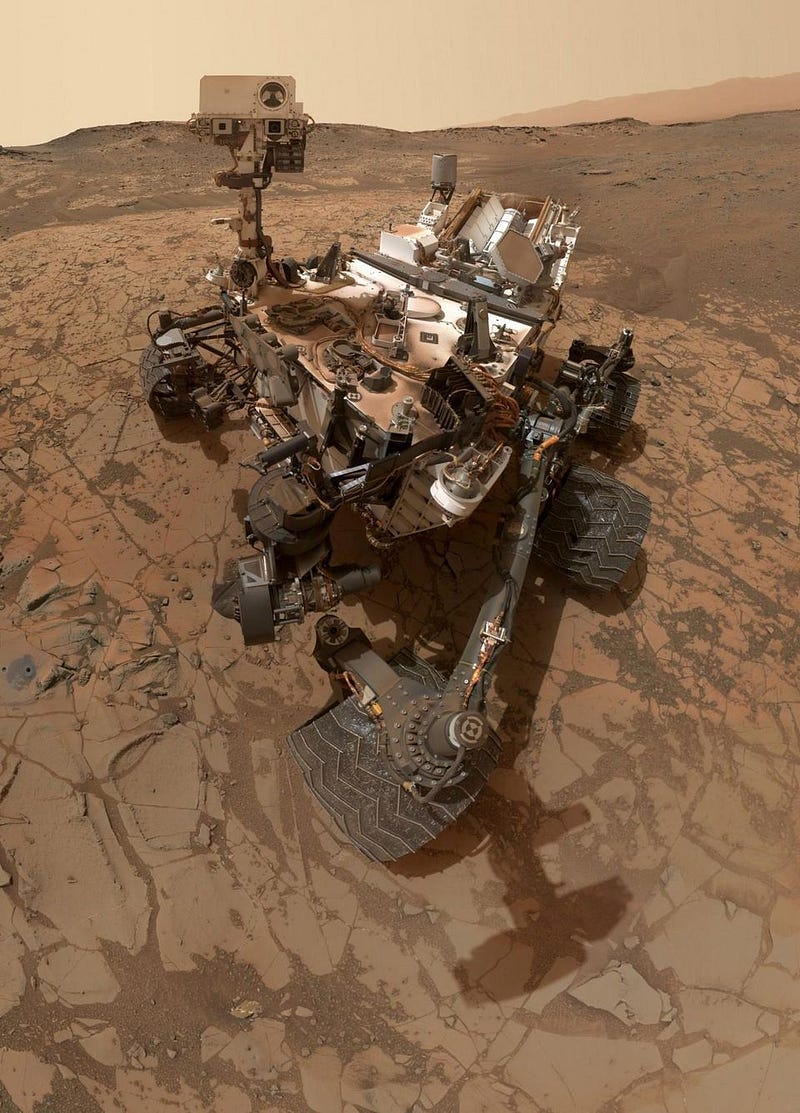
There’s no doubt about it, observationally. The sky of Mars is both red and bright, in contrast to what you’d naively expect from, say, an equivalently thinner, sparser version of Earth’s atmosphere. This is the subject of a number of conspiracy-minded claims out there, as what we’ve actually seen from the Martian surface is incredibly different from what we expected before we ever went there. What could be the cause of this?
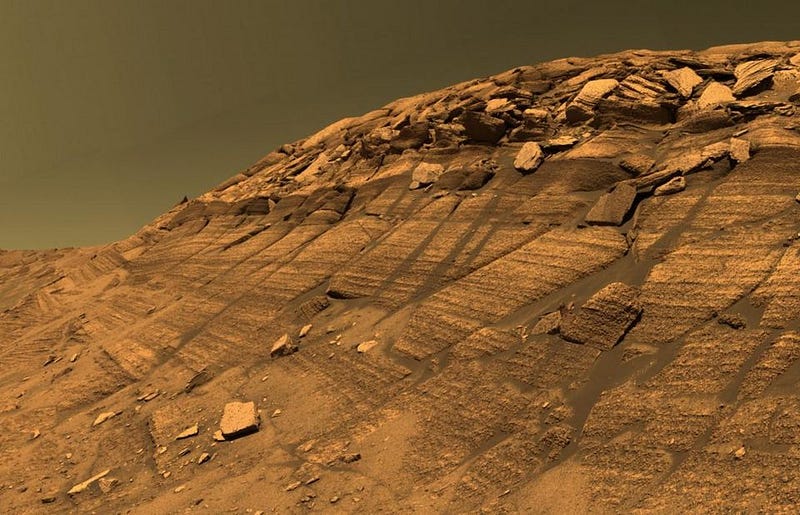
Before your mind goes and jumps to the wild conclusion that some people will immediately consider — namely, that all of the photos released by NASA are color-corrected photos from Earth — let me show you a picture of Earth that hasn’t been color-modified in any way.
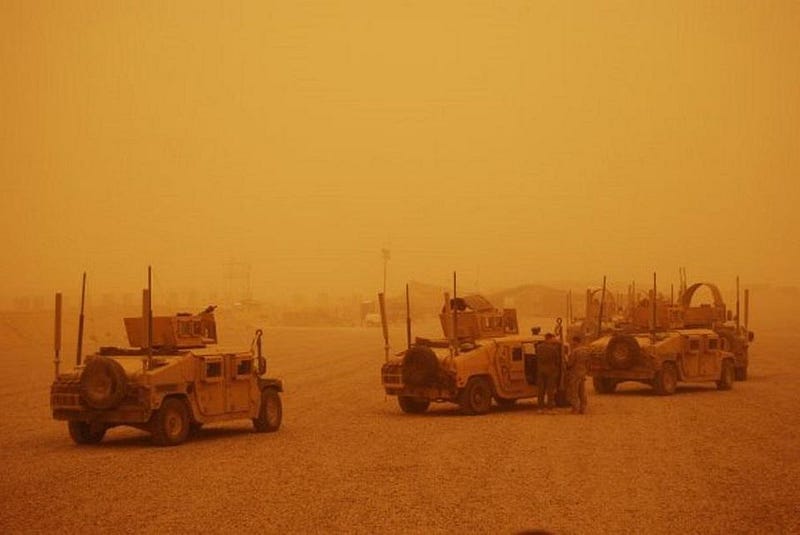
Does this photograph remind you of photos you’ve seen of Mars? Depending on which photos of Mars you’re thinking of, the answer might be yes, but you might also be thinking that the sky should be redder, rather than more yellow.
In other words, perhaps you’d prefer a photograph like the following.
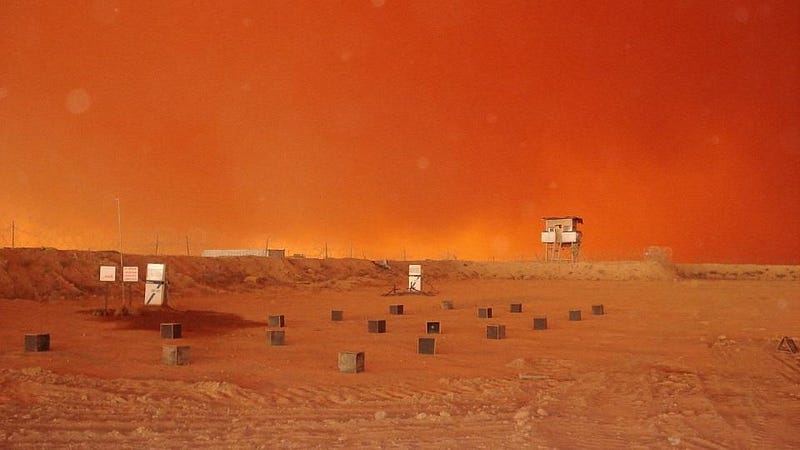
Neither of these photos were taken anywhere near sunset, but they were taken under very specific conditions here on Earth. Namely, they were taken when there were large amounts of particulates in the atmosphere. If you’ve ever been in a location where there are large amounts of smog, air pollution, or nearby forest fires, you’ve likely experienced similar conditions to what either a desert sandstorm or the Martian atmosphere looks like.
Now, if you take a look at Mars itself from a variety of rovers and locations, you’ll notice that it appears to have a variety of colors.
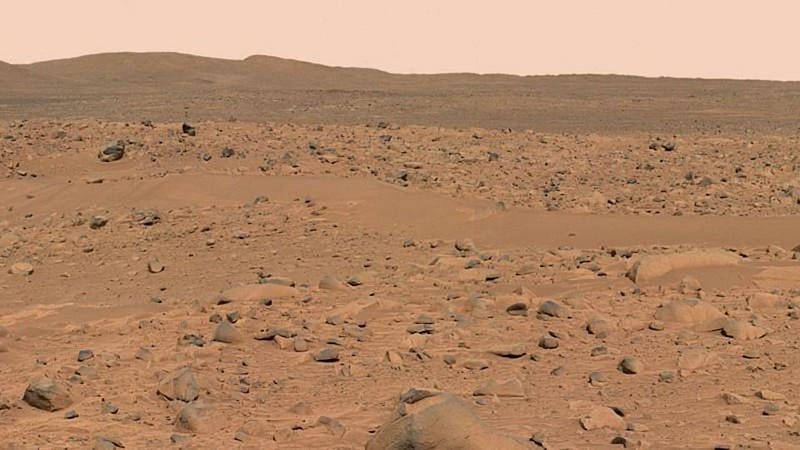
What accounts for the inconsistency?
There are a number of factors at play, it turns out. It’s true that the cameras aboard the rover — which vary slightly from rover to rover — play a role. But that isn’t the major factor in the various colors you’ll see; there are physical explanations behind these varied landscapes and skies. They include:
- the amount and density of dust in the Martian atmosphere at the time,
- the physical size of the dust grains that are present, which should vary in both place and time,
- and the position of the Sun in the sky, relative to the photograph that was taken.
The variations in what we see when we look at Mars can showcase some subtle, but vitally important, properties of this world and its atmosphere.
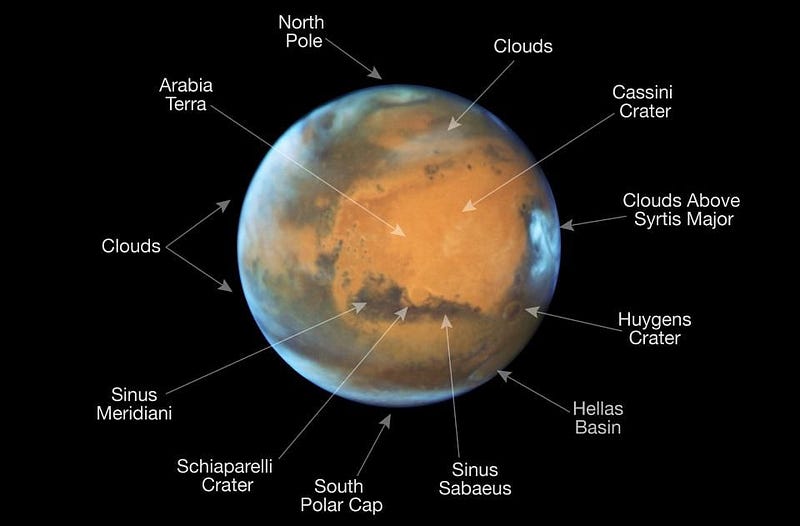
Why, for example, does the Martian sky sometimes appear blue? The above image, taken from afar by Hubble, is consistent with what was first seen from the surface by Mars Pathfinder, and shows a sky that can be covered in water-ice clouds where very small particles are responsible for these clouds. They’re perhaps one-tenth the size of typical Martian surface dust, or just about one-thousandth the thickness of a human hair. These particles, because they’re smaller than the wavelength of visible light, appear bright in the blue portion of the spectrum, but are practically invisible in red light. This teaches us an important scientific lesson as well: the ice particles in Mars’ clouds are very small.
On Earth, during a sunrise or sunset, the sky far away from the Sun, so long as its free from particulates, still appears blue, while the Sun itself and its nearby vicinity appears reddened. What happens on Mars?
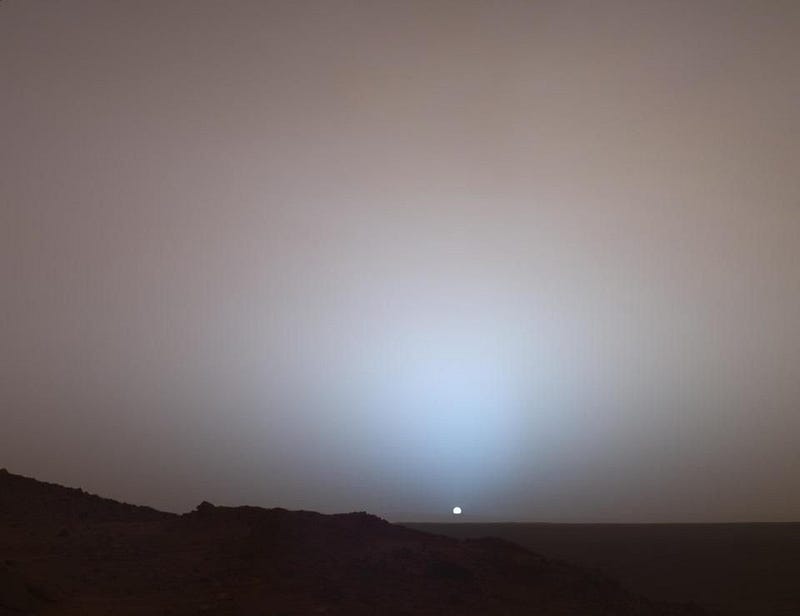
The sky of Mars near the Sun appears blue, while the sky far away from the Sun appears red. The disk of the Sun appears mostly white, with a slight bluish tinge. This has nothing to do with clouds or ice, but by the Martian dust that permeates throughout the planet’s atmosphere. The dust in the atmosphere, like dust in a sandstorm here on Earth, absorbs blue light, which gives the sky a primarily red color. However, the dust scatters some of the blue light into the area just around the Sun, due to the sizes of the dust grains. In fact, if you watch the Sun set on Mars, as the Curiosity rover did in 2015, you can see the incredible visual effect of the blue, setting Sun.
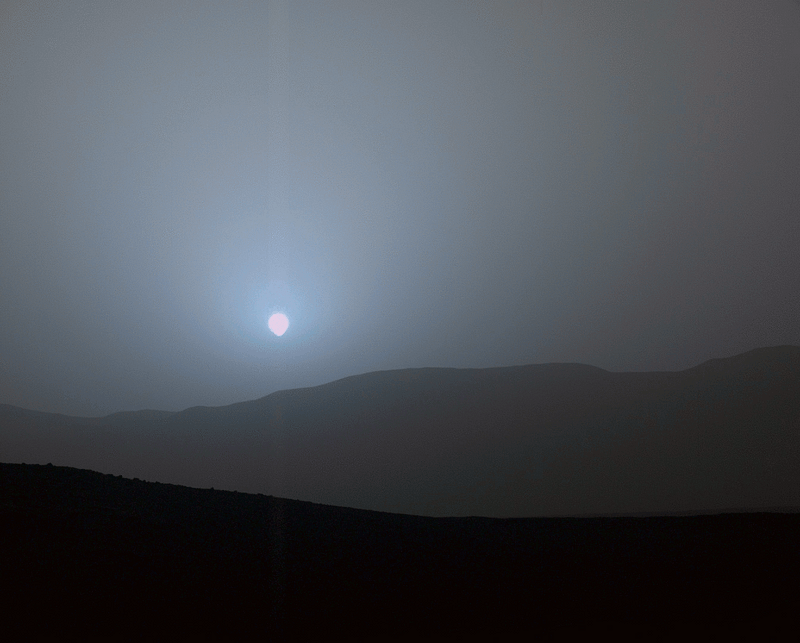
The reason Mars looks so different from what we expected before we ever visited this world is because of the prevalence of dust, not only on the red planet’s surface, but throughout the Martian atmosphere. Sure, sometimes Mars has dust storms which intensifies this effect even further, and sometimes there are greater or lesser densities and sizes of dust, which can alter what we see. But it isn’t simply a transparent atmosphere like we normally have on Earth; the dust is suspended throughout it, which explains why distant sights appear obscured. Because the dust particles on Mars are large, blue light is primarily absorbed, which means that the light reflected off of the dust grains is going to be primarily red. Also, because there are so many particles, the Martian sky is going to be much brighter than we would have expected, naively, if no dust were present.
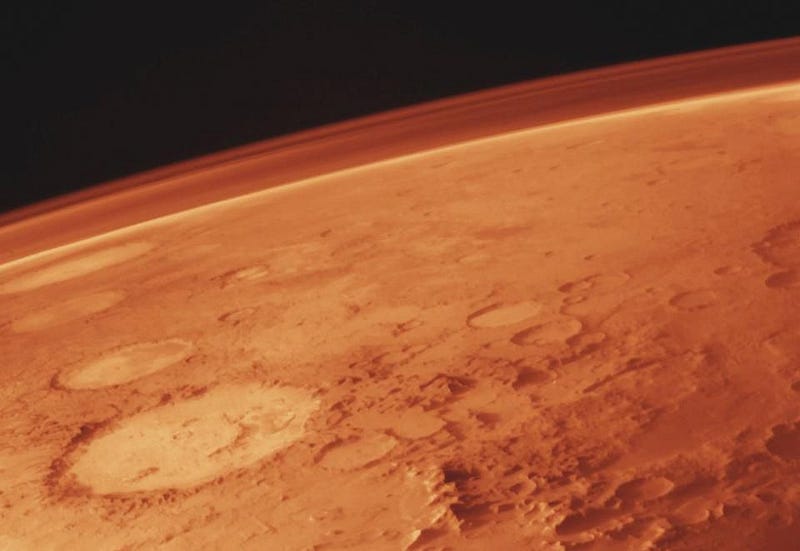
We didn’t even need to land on Mars to see this; as NASA’s Viking missions approached Mars way back in the early 1970s, it got an up-close glimpse of Mars’ atmosphere from space. The red glow of Mars was clearly visible from tens of thousands of miles away, and blocked much more light than if there were no dust on Mars. They’ve even been able to deduce the mineralogy of Martian dust from the absorptive effects that appear in its atmosphere. To summarize:
- Mars’ clouds are made of tiny ice particulates,
- Mars is much dustier than planet Earth,
- the dust is red in color,
- preferentially absorbing blue light,
- but the red is primarily reflected away along the Sun’s line-of-sight,
- causing the sky to be red, the sky near the Sun to be blue, clouds to be blue, distant mountains to appear dim/obscured, and the clouds to be blue.
This is why the atmosphere of Mars appears the way it does, as backed up by decades of evidence. You cannot apply the physics of Earth’s atmosphere to Mars and expect to get a sensible result. As we all should know, Mars is, quite literally, a whole new world.
Send in your Ask Ethan questions to startswithabang at gmail dot com!
Ethan Siegel is the author of Beyond the Galaxy and Treknology. You can pre-order his third book, currently in development: the Encyclopaedia Cosmologica.



